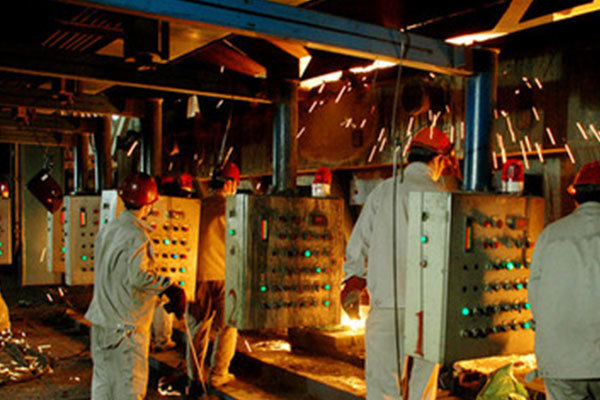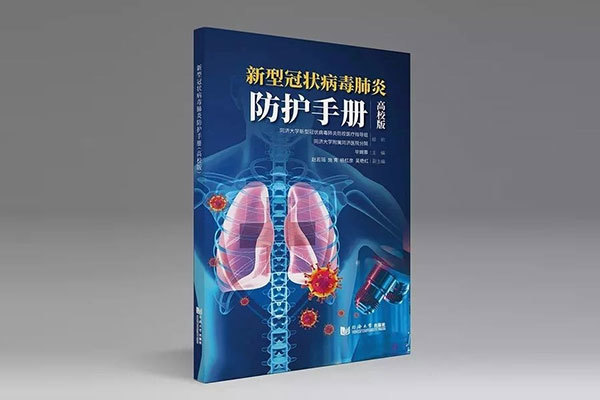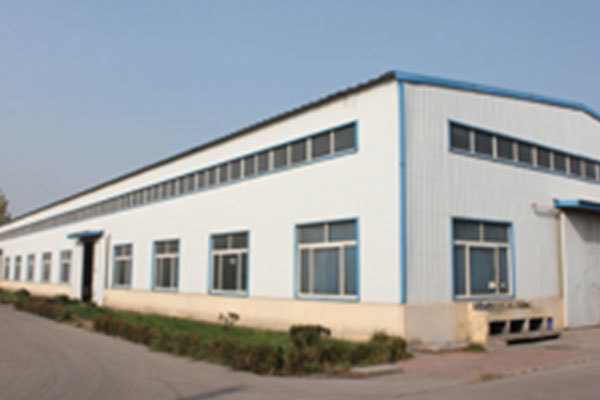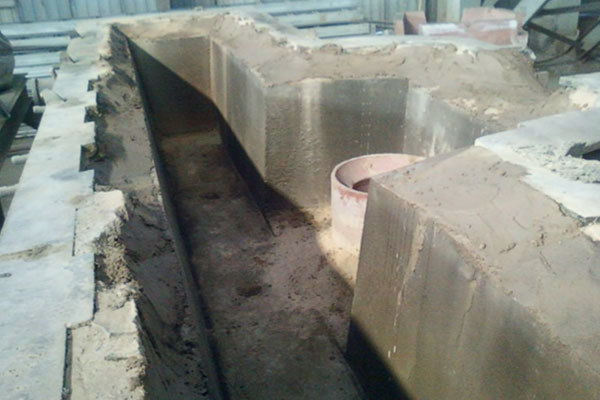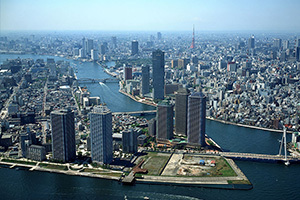Summary of the top five global energy-saving and emission-reduction science and technology achievements in 2014
Release time:
2019-01-29 00:00
With the development of energy-saving and environmental protection industry, global enterprises are constantly innovating technologies to maximise the use of energy, energy-saving technologies continue to improve, the following is a summary of recent domestic and foreign technology.
The first hydrogen peroxide to propylene oxide plant in China was built in Hunan province. SINOPEC's "Ten Dragons" key research project, the first self-developed hydrogen peroxide to propylene oxide plant in China, was built in Hunan Changling Refining Company. The project has a design capacity of 100,000 tonnes/year and is expected to generate sales revenue of more than RMB 1.1 billion per year after it is put into operation.
Propylene oxide is widely used in chemical, pesticide, textile, daily chemical and other industries, is an important basic chemical raw material. Direct oxidation of hydrogen peroxide is an emerging clean production process, with low energy consumption, less pollution and other advantages compared with traditional processes such as chlorohydrin method, basically no industrial effluent discharge.
Under the situation that a few foreign companies have monopolised the technology and it is extremely difficult to introduce it, Changling Refining & Chemical, in cooperation with Petroleum & Chemical Research Institute, Hunan Changling Petrochemical Science & Technology Development Co, Ltd, SINOPEC Shanghai Engineering Co, Ltd, and Qingdao Safety Engineering Research Institute, has successfully developed this process independently, breaking the monopoly of foreign countries on this green and environmentally friendly technology.
In 2010, the process came out of the design office to start industrial tests, and the results showed that the technical indicators meet the design requirements, and some indicators are ahead of the international level.
In 2012, the technology was reviewed and approved by SINOPEC, thus entering the trial production stage.
In January 2013, Changling Refining started the construction of 100,000 t/a hydrogen peroxide to propylene oxide plant. The project management department coordinated the project scientifically, formulated a strict safety management and protection system, standardised procedural construction, and achieved good results of safe construction of one million man-hours with no recordable incidents under the circumstances of multiple changes in the project design, tight time for ordering equipment, and difficulties in construction coordination.
German standard passive energy-saving house settled in Jinan Recently, three pilot projects of passive ultra-low energy-consumption building (referred to as passive house) built by German standard settled in Jinan. The three pilot projects established in Jinan are a command centre for disaster prevention and evacuation in Quancheng Park, a teaching experiment centre at Shandong University of Architecture, and a teaching project at Shandong Urban Construction College. The three projects, as required, will be based mainly on German passive house construction standards.
At the same time to determine the province's other eight pilot projects, and the 11 projects will receive a provincial financial subsidy of 60 million yuan. Referring to "no heating and air conditioning can maintain a suitable temperature", many people in the industry should be "goodbye to air conditioning and heating era" this advertisement is still fresh in their minds. As early as 2002, Beijing Fengshang Real Estate in Haidian Wanliu area to build Fengshang International Apartments took the lead in the "farewell to the era of air-conditioning and heating", becoming the first application of the European high-comfort, low-energy environmentally friendly optimisation of the design theory of the flat residential buildings, the building is mainly through the concrete heating and cooling system, health The building is mainly designed to create eco-apartments through five systems: concrete heating and cooling system, healthy fresh air system, external wall system, external window system and roofing system, which realises the recycling of renewable resources and low energy consumption under the premise of high living comfort.
Such a benchmark energy-saving building once created a huge wave in the domestic real estate industry. Since then, low-energy buildings have begun to step into people's eyes. But more than a decade, about zero energy, passive buildings in the country rarely reported, but the specific implementation of the pipa like half cover, but also more or less let people feel out of reach.
The so-called "passive" housing, is not required through the use of air conditioning and heating to regulate the room temperature can achieve the effect of moderate warm and cold. In our country's thousands of years of construction history, the ancestors dug holes in the earth, living in the nest is essentially a primitive passive house.
Unlike traditional projects, passive house projects are built differently from traditional building projects in order to achieve excellent thermal insulation and airtightness. In terms of insulation, the insulation layer of a typical project nowadays is only 5cm, while the insulation layer of a passive house is as thick as 20-25cm. Then, for example, when installing solar water heater brackets, two layers of insulation boards have to be padded underneath the brackets before they can be fixed, so as to avoid heat dissipation. The glass windows are special three-layer windows, and even the sockets installed on the wall inside the room are subject to special treatment to strengthen the heat preservation and airtightness. Various new technologies are applied, and such passive houses can save more than 90 per cent of energy compared with common construction projects nowadays.
Boston Battery: "space quality" to promote the development of new energy public transport Global new energy ternary lithium battery technology leader Boston Battery in the first half of last year has begun in Hohhot, Inner Mongolia, Xiangfan, Hubei, bus battery test. During the field tests, Boston's battery products experienced extreme weather conditions ranging from -20℃ to 34℃. According to the internal report from Boston Battery: its bus test in Hohhot, Inner Mongolia, went through two seasons, summer and winter, and the driving range on a single charge reached 280km (SOC: 99%~25%) in the summer, and 258km (SOC: 95%~30%) in the winter, which fully meets the needs of urban public transport in terms of capacity, and regardless of driving in any environment, the difference in the voltage of battery single unit never exceeds 100mV, reflecting the fact that the battery can be operated at a temperature of -20℃~34℃, which is the highest in the world. The voltage difference of the single battery has never exceeded 100mV regardless of driving in any environment, reflecting great stability and superiority. During the battery pack test in Xiangfan, after driving more than 14,000 kilometres, the bus company's staff opened the battery box and found that there was still no contamination inside the box, and the Boston batteries also performed well in terms of sealing and protection measures.
A few days ago, the Boston battery also successfully passed the NASA (NASA) space test. According to the test report, Boston battery pole in its complex, harsh simulation of the space environment, its charging and discharging, shock resistance and battery safety sealing design and other aspects of the "aerospace quality", eye-catching. NASA's selection of batteries encompasses safety in extreme conditions, stringent quality control, and consistency in battery production. During the testing phase, NASA randomly selected a certain number of batteries from the production line several times for testing, and Boston batteries were recognised for their excellent consistency.
German industry giants join forces to launch rapid charging station network construction In order to promote the development of e-mobility and the construction of a comprehensive network of charging stations in metropolitan areas and along major transport routes, BMW, Daimler, Porsche, Volkswagen and the German energy supply company EnBW, the German Cooperative Publishing House, as well as two German universities, have launched a major project called "SLAM - Rapid Charging Station Network". Network".
Within the framework of this project, 400 AC and DC fast chargers are planned for 2017, with the specific target of charging up to 80 per cent of the storage capacity within half an hour, which will be available for all vehicles with the European standard connector CCS. As a pilot, this company before the end of September this year in the relevant banks around the construction of at least 20 rapid charging pile investment in order to test its recognition.
Japanese farmers planting vegetables while "planting" electricity income increased 10 times Generally there will be some scarecrows in the field to drive away birds, but in Japan's Kanto region of Honshu, Chiba Prefecture, Ichihara City, a 750-square-metre vegetable gardens, you see a very different scenario: field rows stand between the rows of neat brackets, the top of the gaps in the arrangement of lead-grey plates, but they have a lead-grey flat, but they have a lead-grey flat. There are lead grey plates, but they're not there to keep the birds away. On closer inspection, you can see that they are solar panels. There are 348 solar panels installed on 750 square metres of farmland. They are mounted on top of tubes, 3 metres above the ground, with 5 metres between each row. In order to generate as much power as possible, the panels can also be adjusted with seasonal changes in angle, such as winter and summer, the panels facing the sun angle can be adjusted to 40 degrees, 25 degrees, etc..
Preceding line



